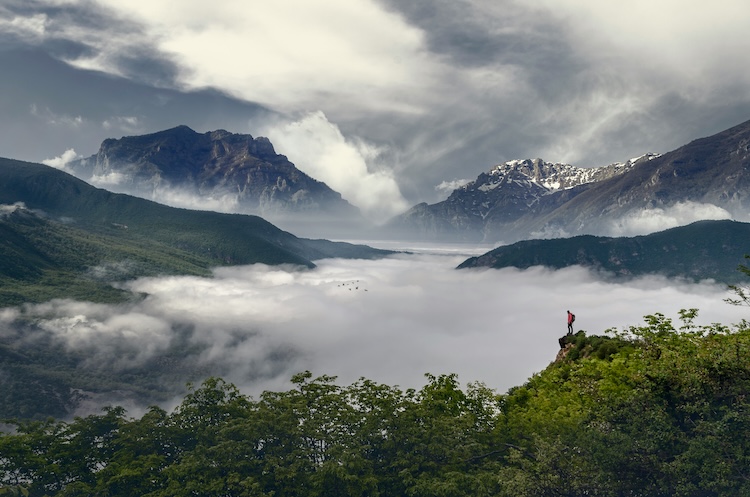By Shooka Bidarian, United Nations University and Mark Maslin, UCL
(The Conversation) – From arid deserts and alpine meadows to dense wetlands and temperate forests, Iran’s natural landscapes give rise to rich native wildlife. This country is home to over 8,000 species of plants, nearly 500 bird species and 194 mammals. The UN has listed 13 special ecological areas, including salt lakes and marshlands, that support huge numbers of migratory birds.
But this rich natural heritage is under growing threat. The Asiatic cheetah, once widespread across west Asia, is now confined to desert reserves in central Iran, with fewer than 50 remaining.
The Persian onager, a wild ass native to Iran’s deserts, struggles on with just 600–700 animals remaining, displaced by both water scarcity and livestock. And the Siberian crane, once a seasonal visitor, has vanished from the Iranian landscape entirely. The last known individual, a male named Omid, was last spotted over three years ago.
Iran’s accelerating biodiversity crisis is a warning sign, but it does not exist in isolation. The country’s ecosystems are under siege not only from species loss, but also from deeper, systemic environmental pressures.
Chief among these is a worsening water crisis. This is now widely recognised by researchers as a case of “water bankruptcy”, where unsustainable demand has long outstripped the country’s renewable water resources.
Due to the Iran-Iraq war, international isolation and sanctions since the 1980s, the government has driven policies to make the country’s food system more self-sufficient. They have promoted growing crops such as wheat and rice, which are water-intensive and ill-suited to Iran’s arid climate.
Today, more than 90% of Iran’s water is allocated to agriculture, primarily to grow these water-hungry crops in some of the driest parts of the country. The consequences have been stark: land degradation, the erosion of rural livelihoods and a deepening cycle of poverty and environmental decline.
Poor water governance and inappropriate farming have driven the depletion of aquifers (underground layers of porous rock saturated with groundwater) and the drying out of rivers and wetlands. This has placed mounting stress on communities and local economies.
These challenges are compounded by entrenched interests and fragmented institutions’ oversight, and bureaucracies that are competing for control of the limited water supplies. In such a landscape, meaningful reform and equitable distribution become difficult, if not impossible.
Poverty, migration and dysfunctional institutions are causing widespread food insecurity. Without coherent, transparent governance and a long-term vision for environmental stewardship, Iran’s water crisis threatens to undermine both public welfare and national economic stability.
Environmental advocacy in Iran faces formidable legal and political barriers. Civil society organisations have confidentially told us they often struggle to formally register due to restrictive state permitting systems. This limits their ability to operate independently or engage in effective community mobilisation. Meanwhile, independent conservation efforts have come under increasing scrutiny by the Iranian government.
In 2018, several conservationists from the Persian Wildlife Heritage Foundation, a not-for-profit organisation, were arrested on national security charges, despite no credible evidence. This move was widely condemned by international human rights organisations.
These arrests were central to the documentary Tears of Extinction (written and presented by one of us, Shooka Bidarian) that highlighted how, without these conservation efforts, the Asiatic cheetahs would face extinction within a few years.
From challenge to reform
The prosecutions and prolonged detentions have contributed to a chilling effect, discouraging other scientists and conservation organisations from engaging in environmental work due to fears of surveillance and reprisal. This concern was publicly echoed by Issa Kalantari, then vice-president and head of Iran’s Department of Environment, who stated that “if we knew they were spies, we would have treated them differently” and admitted the arrests caused environmental activities across the country to freeze.
Despite the severity of Iran’s environmental challenges, experts from the United Nations University and colleagues have outlined actionable reforms. These range from modernising irrigation systems and adjusting water pricing to enhancing data transparency and embracing participatory, decentralised governance.

Photo of Kodir, Mazandaran Province, Iran, 2023, by Iman Gozal on Unsplash
Long-term resilience also requires adaptive planning that integrates climate variability and social vulnerability into national water strategies. These aren’t radical ideas. These approaches have been proven to work well in other water-stressed regions such as Australia.
To protect Iran’s ecosystems and ensure their survival for future generations, the country needs new approaches to environment governance. This needs to include sustained, science-led conservation, supported by international collaboration and local participation.
![]()
Shooka Bidarian, Media and Journalism Fellow, Sustainability and Climate at United Nations University Institute of Water Health and Environment, United Nations University and Mark Maslin, UCL Professor of Earth System Science and UNU Lead for Climate, Health and Security, UCL
This article is republished from The Conversation under a Creative Commons license. Read the original article.


 © 2026 All Rights Reserved
© 2026 All Rights Reserved